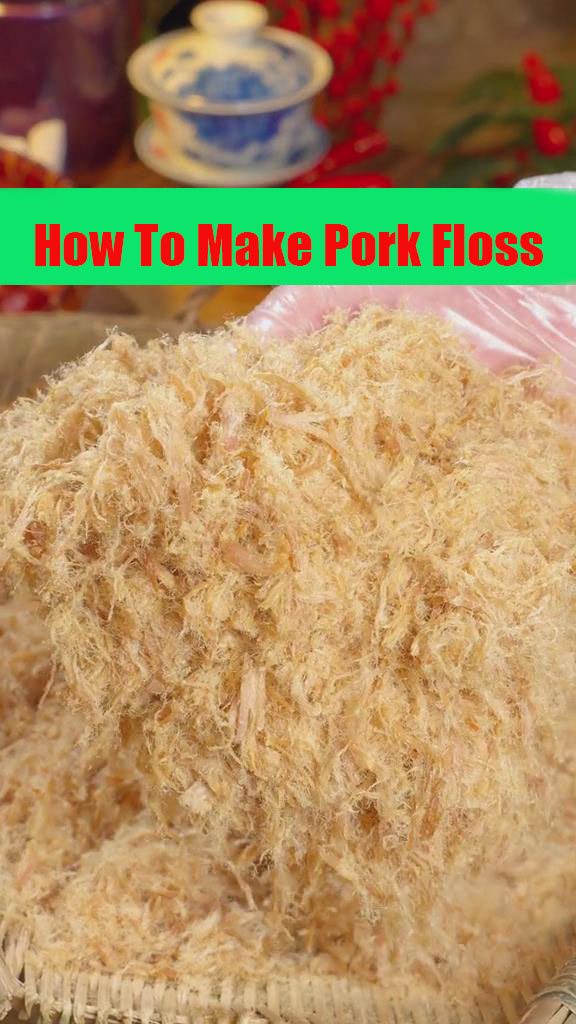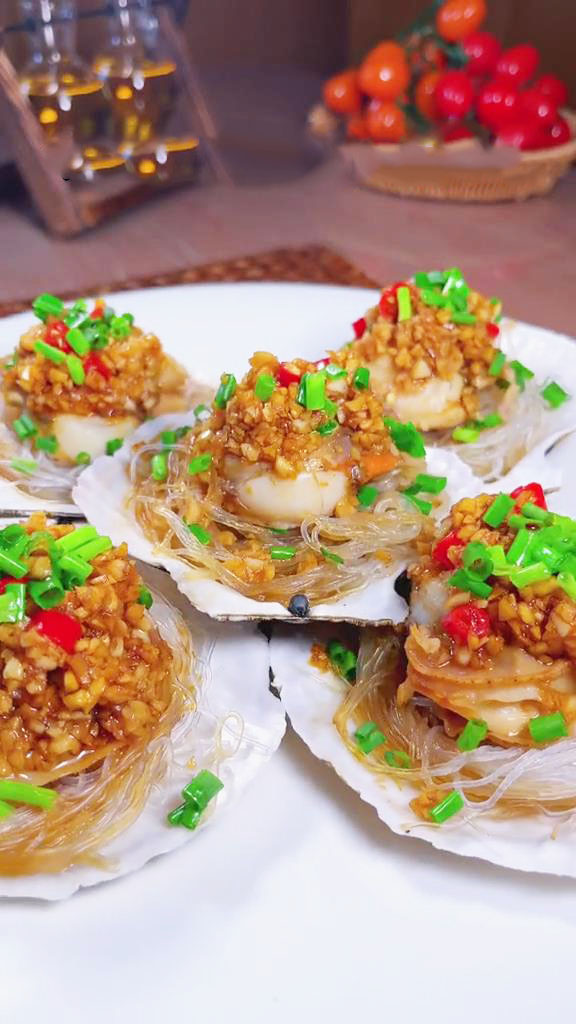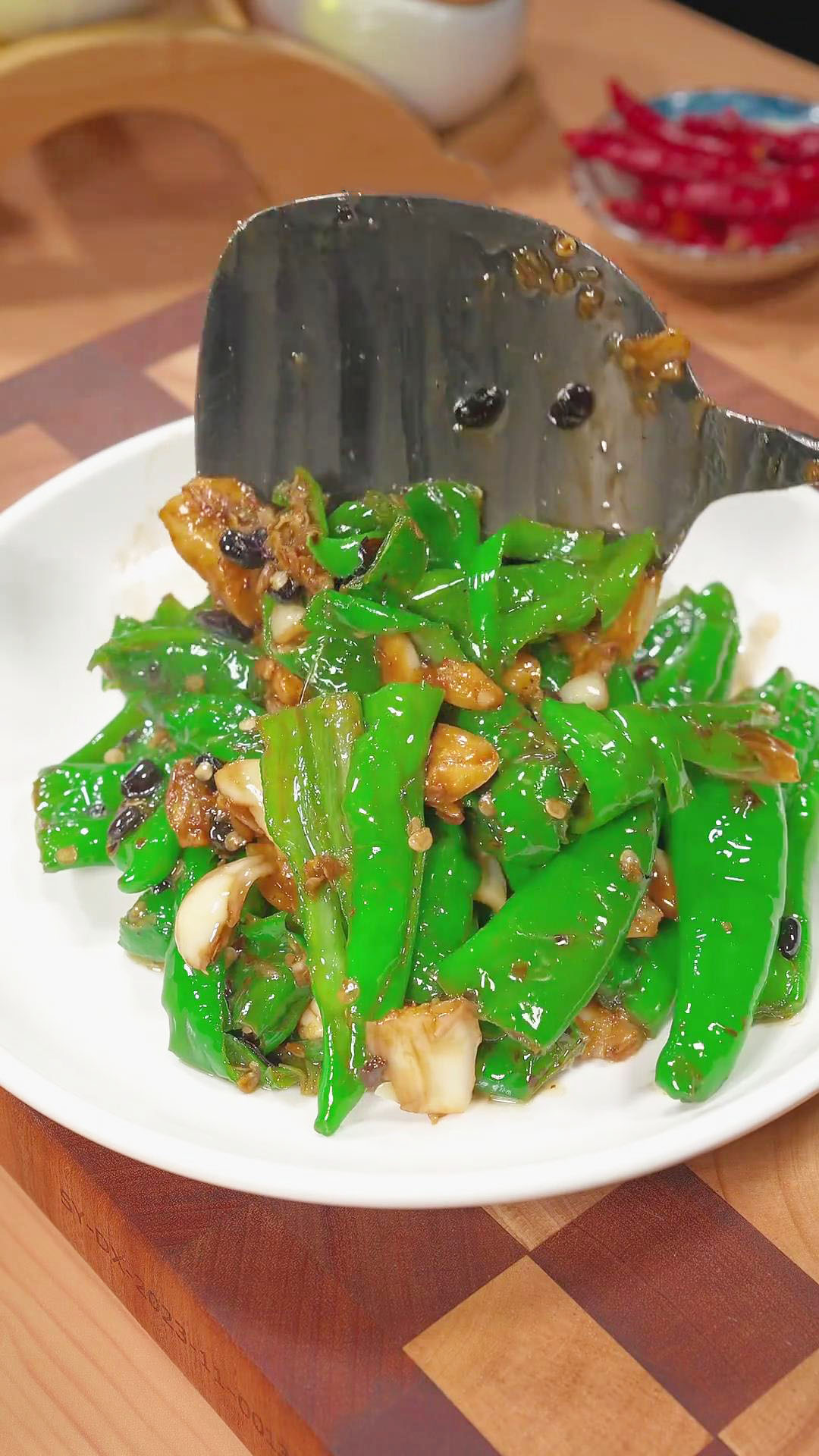Pork floss is a popular Asian ingredient that is widely used in a variety of dishes. Have it as a bun filling, a rice topping, or even as a salad garnish.
There are countless ways to use it just how you like it. It is versatile and can be easily cooked at home with a couple of simple steps outlined in this recipe guide.
- What Is Pork Floss?
- What Is Pork Floss Used For?
- How To Store Pork Floss
- Tips To Know In Making Pork Floss
- Equipment And Ingredients To Make Pork Floss
- How To Make Pork Floss
- Serve And Enjoy Pork Floss On Your Favorite Dishes
What Is Pork Floss?
Pork floss is an Asian snack and condiment that originated in China. You may also know it as meat floss, meat wool, or rousong (肉松). It is dried shredded meat with a fluffy and cottony texture made from seasoned pork.
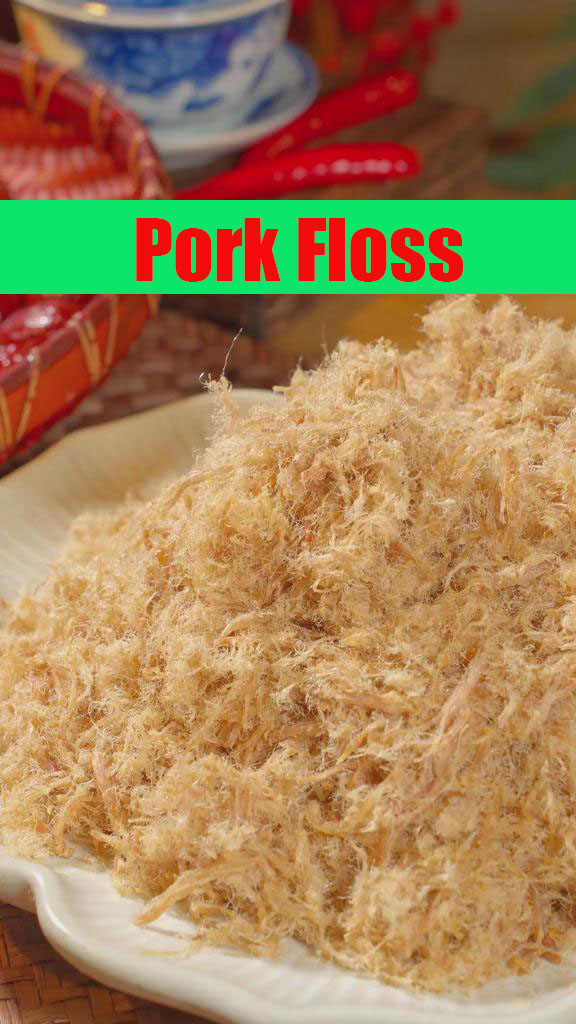
If you are not into pork, you can also make it with lean cuts of beef, chicken (check my Chicken Floss recipe), turkey, or fish. The pork meat is typically stewed or braised to make it tender and easy to shred into fine strands. It is seasoned with several ingredients, including sugar, light soy sauce, scallion, ginger, and cooking wine.
As a result, you get a savory and sweet pork floss with a hint of meaty umami taste. It has a bit of crunch, similar to cotton candy.
It is considered a good source of protein and fiber. However, it is also unhealthy since it contains saturated fat, cholesterol, sodium, and sugar. So, make sure to consume pork floss in acceptable amounts.
What Is Pork Floss Used For?
Pork floss is not usually eaten alone. It is commonly used as a topping, garnish, and filling for other main or small dishes such as the pork floss bun, pork floss sandwiches, and pork floss cake. Additionally, you can use pork floss as a filling for dumplings, or as a topping on congee.
Here are some examples of dishes that you can use pork floss:
| Filling | Topping | Garnish |
| Pastries | Rice | Salad |
| Buns | Rice dishes | Soup |
| Sandwiches | Noodles | Pancakes |
| Dumplings | Congee | Crackers |
| Sticky rice rolls | Tofu | Toast |
| Onigiri | ||
| Egg rolls |
Tips To Know In Making Pork Floss
There are a few tips and tricks you can follow to help you make pork floss easier, especially if it is your first time making it. Remember these simple tips to make quality pork floss:
- Use a non-stick pan to prevent the shredded meat from sticking and avoid ruining the texture. Make sure the pan is preheated to prevent the shredded meat from sticking and have even heat throughout the pan.
- Cut the pork into smaller pieces to shorten the simmering process and make shredding easier.
- Use pork tenderloin or lean cuts of meat for easier shredding.
- Cook in low heat to allow the strands to become fluffy over time and avoid burning them too quickly. This is an important tip to achieve a cotton-like texture.
- Stir and flip continuously. Do not just let the strands sit on the pan. Skipping this process will not make the strands fluffy and will lead to uneven dry strands. This will also prevent the strands from clumping and sticking together. Take your time and do not rush the dehydration process when cooking in the pan.
Equipment And Ingredients To Make Pork Floss
Prepare these basic kitchen equipment and ingredients to make pork floss. Here’s everything you need to start cooking.
Kitchen Equipment
- Non-stick pan or wok for stir-frying
- Knife and chopping board to cut the meat
- Pot for simmering
- Wooden chopsticks or spatula for stir-frying
- Bamboo sieve for drying and rubbing (optional)
- Sealed jar, container, or vacuum sealer bag for storage
Ingredients
- 2 liters water
- 500g pork
- 20g scallion
- 20g ginger
- 1 tbsp cooking wine
- 2 tsp sugar
- 1 tbsp light soy sauce
- 1 tbsp cooking oil
How To Make Pork Floss
Prepare The Meat For Shredding
Cut the pork tenderloin along the grain, about 1 to 2 inches long, 1 inch wide, and 1 cm thick per piece.
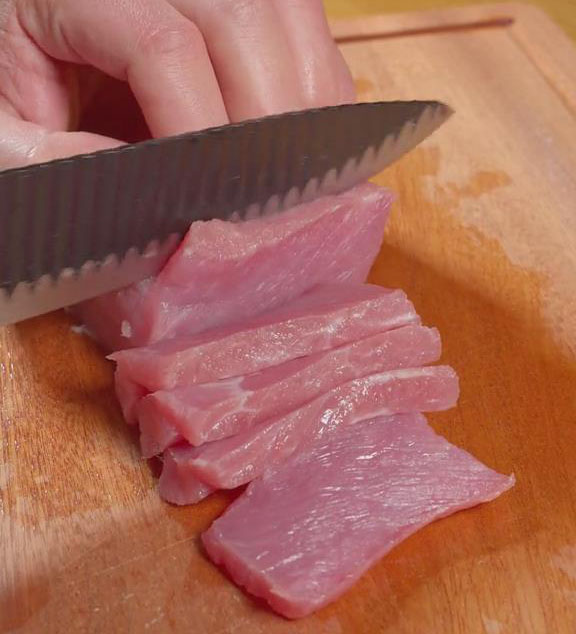
In a pot, add 2 liters water, 500g sliced pork, 20g scallion, 20g ginger, and 1 tbsp cooking wine.
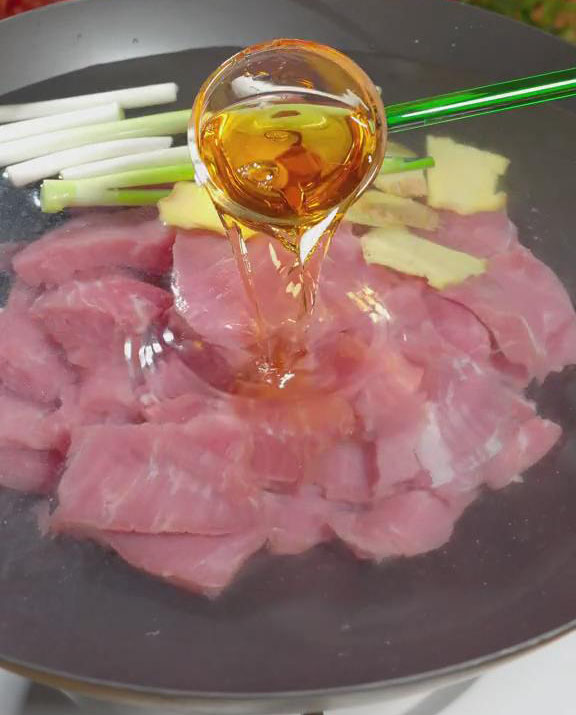
Cover the pot with a lid and cook on high heat. Once it boils, turn the heat down. Remove the pork and drain after 30 minutes or once the meat is well cooked.
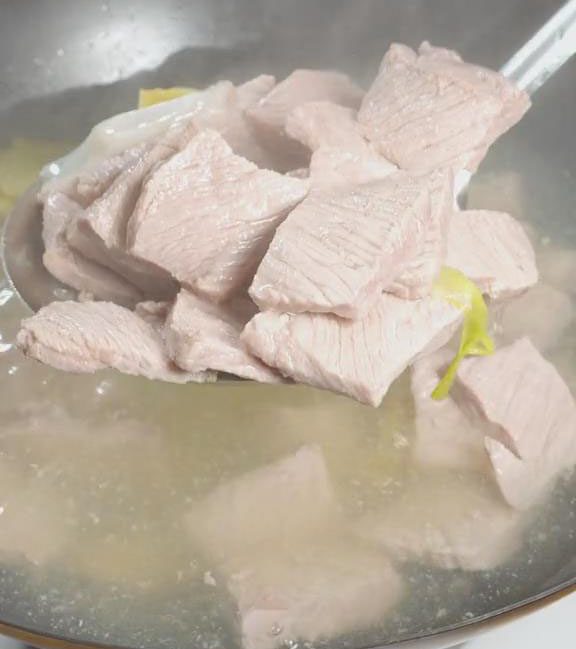
Allow the meat to cool down so it is not too hot to touch when shredding. Tear it into shreds once the meat cools down.
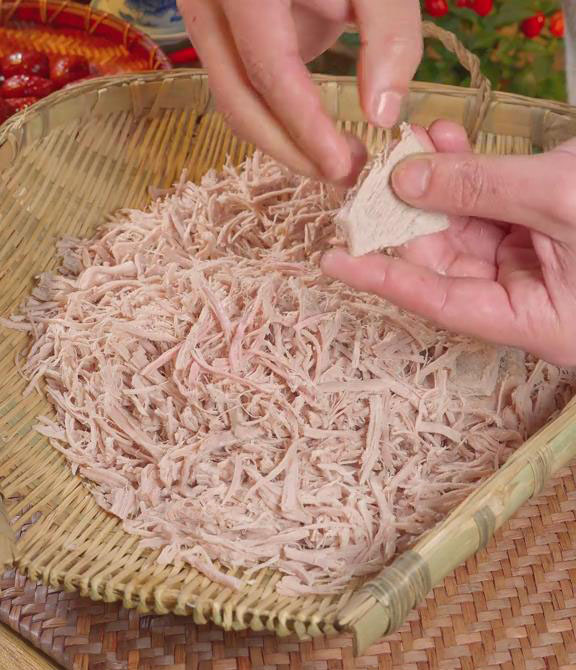
Cook The Shredded Meat In Seasoning
Prepare the seasoning in a bowl. Combine 2 tsp sugar, 1 tbsp light soy sauce, and 1 tbsp cooking oil. Stir evenly to mix the seasoning well.
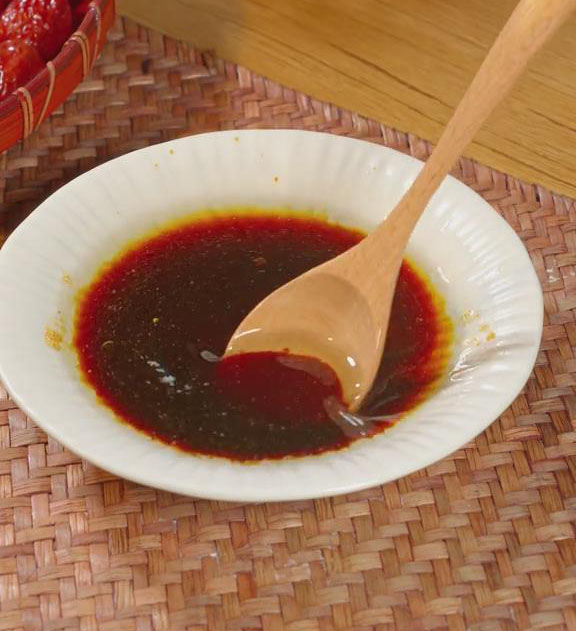
Add pork floss to the pan on low heat. Add the prepared seasoning and mix it evenly with the shredded meat in the pan. Stir fry continuously on low heat using wooden chopsticks or a spatula.
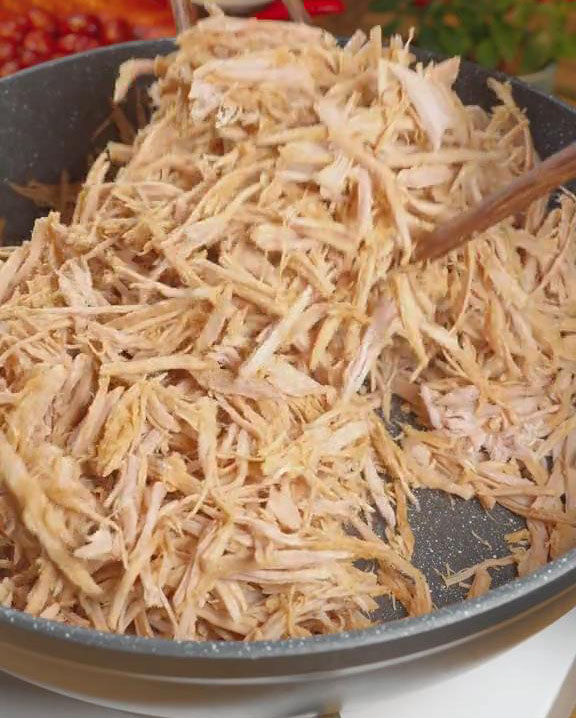
Rub And Tear The Shredded Meat For Bouncy And Fluffy Pork Floss
Rub and tear the shredded meat apart with both hands to make finer strands. Keep repeating this step until the strands become airy and light.
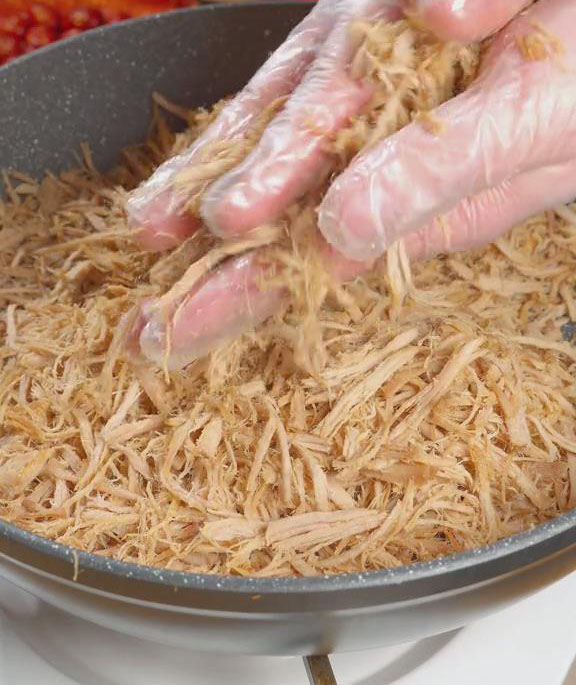
After 20 minutes, you should have fluffy and cottony pork floss. It should not stick to your hands since it has to be completely dry.
Afterward, add pork floss to a bamboo sieve, if you have one. A bamboo sieve is used for rubbing, drying, and draining extra water. Continue rubbing and tearing the pork floss against the bamboo sieve until it is completely dried out.
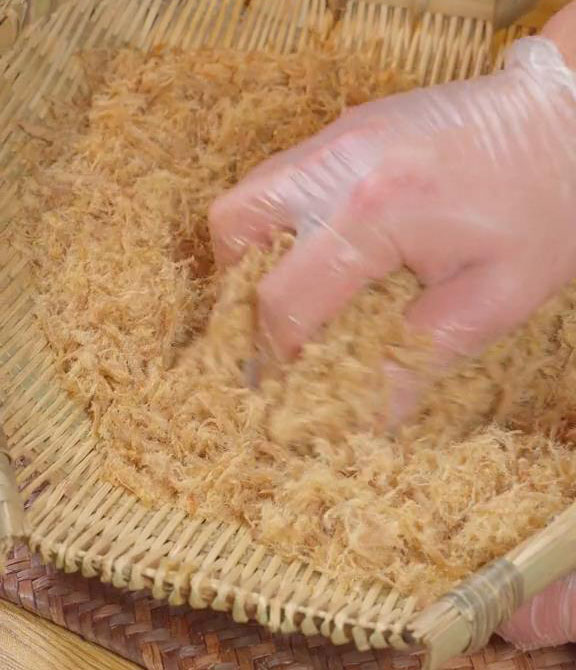
If you don’t have a bamboo sieve, you can skip Step 15 and simply continue the rubbing and tearing process in Step 13 while in the pan. Once it is fully dried, store it in a sealed jar, container, or vacuum sealer bag.
How To Store Pork Floss
This recipe I am about to share in making homemade pork floss has no preservatives. So, it is essential to store it properly to keep it fresh for a longer period and avoid rapid spoilage. Moreover, I suggest you make just the right amount of pork floss to avoid throwing out huge leftovers in case you make more than needed.
In order to maintain its freshness and quality, follow these important storage recommendations:
- Store pork floss in a sealed and airtight jar or container to avoid moisture and maintain its dry texture. Since you want to avoid moisture, make sure the pork floss is dried thoroughly first before storing it in an airtight container or vacuum-sealed bag.
- Keep it in a cool and dry location where there is no direct sunlight and excessive heat to avoid spoilage and bacteria growth. If the temperature is too hot in the cupboard, you can store it in the refrigerator instead to prolong its shelf life.
- Use clean and dry utensils each time you get pork floss from the container to avoid moisture and contamination.
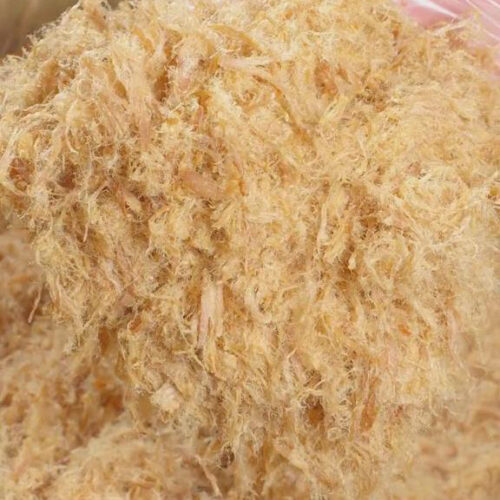
How To Make Pork Floss
Equipment
- Non-stick pan or wok for stir-frying
- Knife and chopping board to cut the meat
- Pot for simmering
- Wooden chopsticks or spatula for stir-frying
- Bamboo sieve for drying and rubbing (optional)
- Sealed jar, container, or vacuum sealer bag for storage
Ingredients
- 2 liters water
- 500 g pork
- 20 g scallion
- 20 g ginger
- 1 tbsp cooking wine
- 2 tsp sugar
- 1 tbsp light soy sauce
- 1 tbsp cooking oil
Instructions
Prepare The Meat For Shredding
- 1.Cut the pork tenderloin with the grain, about 1 to 2 inches long, 1 inch wide, and 1 cm thick per piece.
- 2.In a pot, add 2 liters water, 500g sliced pork, 20g scallion, 20g ginger, and 1 tbsp cooking wine.
- 3.Cover the pot with a lid and cook on high heat.
- 4.Once it boils, turn the heat down.
- 5.Remove the pork and drain after 30 minutes or once the meat is well cooked.
- 6.Allow the meat to cool down so it is not too hot to touch when shredding.
- 7.Tear it into shreds once the meat cools down.
Cook The Shredded Meat In Seasoning
- 8.Prepare the seasoning in a bowl. Combine 2 tsp sugar, 1 tbsp light soy sauce, and 1 tbsp cooking oil.
- 9.Stir evenly to mix the seasoning well.
- 10.Add pork floss to the pan on low heat.
- 11.Add the prepared seasoning and mix it evenly with the shredded meat in the pan.
- 12.Stir fry continuously on low heat using wooden chopsticks or a spatula.
Rub And Tear The Shredded Meat For Bouncy And Fluffy Pork Floss
- 13.Rub and tear the shredded meat apart with both hands to make finer strands. Keep repeating this step until the strands become airy and light.
- 14.After 20 minutes, you should have fluffy and cottony pork floss. It should not stick to your hands since it has to be completely dry.
- 15.Afterward, add pork floss to a bamboo sieve, if you have one. A bamboo sieve is used for rubbing, drying, and draining extra water. Continue rubbing and tearing the pork floss against the bamboo sieve until it is completely dried out.
- 16.If you don’t have a bamboo sieve, you can skip Step 15 and simply continue the rubbing and tearing process in Step 13 while in the pan.
- 17.Once it is fully dried, store it in a sealed jar, container, or vacuum sealer bag.
Nutrition
Serve And Enjoy Pork Floss On Your Favorite Dishes
Use pork floss in a variety of dishes, from sweet to salty and soupy dishes. Fill your favorite buns with pork floss or add a hint of umami on plain white rice. Complement a sweet pastry with salty and savory flavors of pork floss.
The fine and delicate strands also have a savory crunch, adding more texture to your meal. If you can’t think of a dish to use pork floss, you can simply have it straight up as a savory treat. However, you want to refrain from overindulging in it since it is high in fat.

